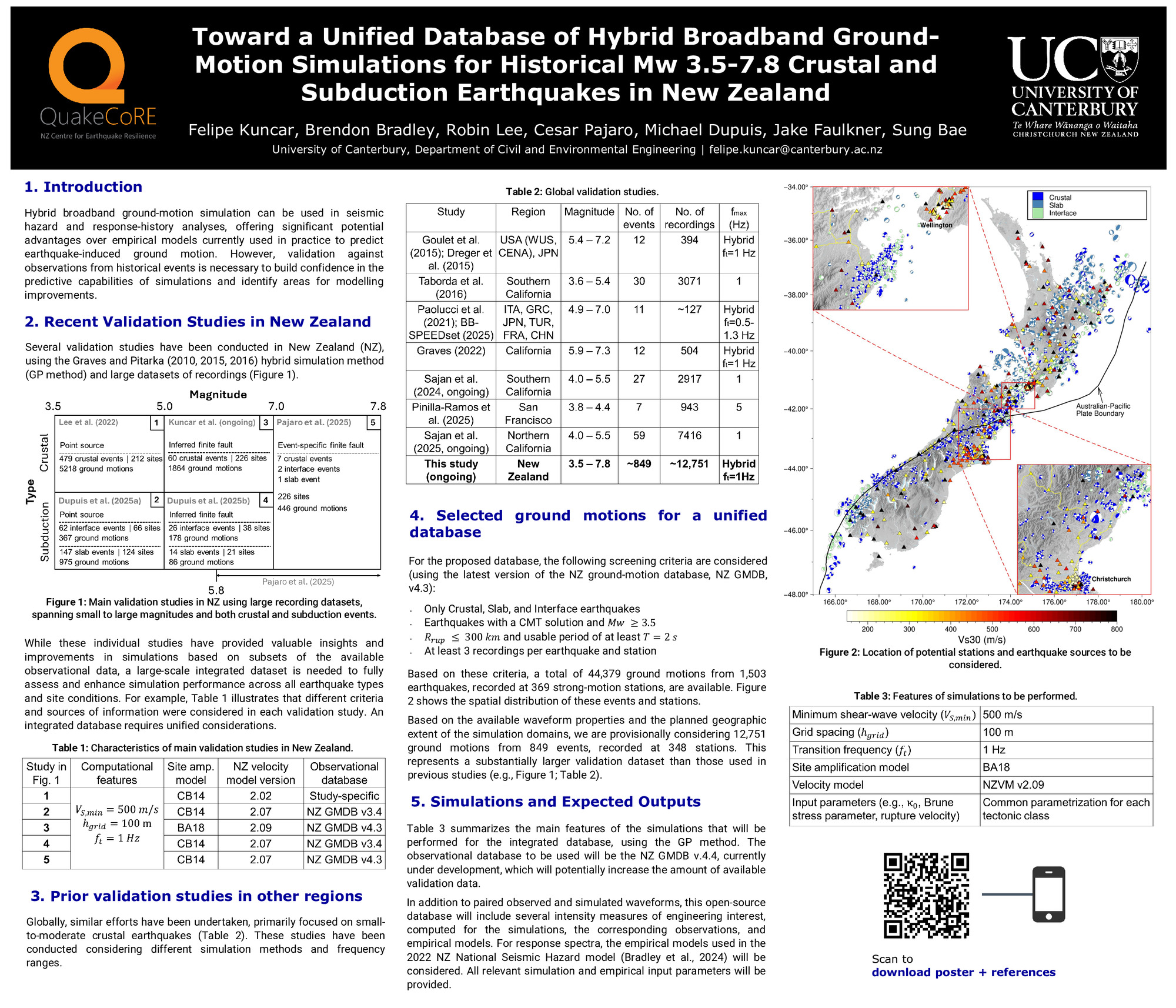Group A, Poster #219, Ground Motions (GM)
Toward a unified database of hybrid broadband ground-motion simulations for historical Mw 3.5-7.8 crustal and subduction earthquakes in New Zealand
Poster Image:

Poster Presentation
2025 SCEC Annual Meeting, Poster #219, SCEC Contribution #14421 VIEW PDF
w-crustal and subduction earthquakes (e.g., Bradley et al., 2017; Razafindrakoto et al., 2018; de la Torre et al., 2020, Lee et al., 2020, 2021, 2022; Tiwari et al., 2024; Kuncar et al., 2024; Pajaro et al., 2025). While these individual studies have provided valuable insights and improvements in simulations based on subsets of the available data (e.g., small-magnitude crustal events, as in Lee et al., 2022), a large-scale integrated dataset is needed to fully assess and enhance simulation performance across all earthquake types and site conditions. This study presents the ongoing development of an open-access database of hybrid broadband ground-motion simulations for over 1,000 historical NZ earthquakes (2000-2022) in the Mw 3.5-7.8 range. Simulations will use internally consistent parametrizations of the commonly used Graves and Pitarka (2010, 2015, 2016) method, and observed records will be obtained from the latest version of the recently developed NZ ground-motion database (Hutchinson et al., 2024). In addition to paired observed and simulated waveforms, the database will include several intensity measures of engineering interest, computed for the simulations, the corresponding observations, and the empirical models used in the 2022 NZ National Seismic Hazard model (Bradley et al., 2024). This will enable a comprehensive examination of simulation residuals and a systematic comparison with the conventional empirical approach. This will be the first open-access database of its kind, supporting international efforts to validate and improve ground-motion simulation methodologies.
SHOW MORE
SHOW MORE



























